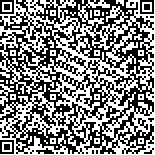|
| 引用本文: | 赵亮,李夏,张芳.黄海水温与沙海蜇丰度年际变化的相关分析.海洋与湖沼,2016,47(3):564-571. |
| |
|
| |
|
|
| 本文已被:浏览 2301次 下载 1804次 |

码上扫一扫! |
|
|
| 黄海水温与沙海蜇丰度年际变化的相关分析 |
|
赵亮1, 李夏1, 张芳2
|
|
1.天津科技大学海洋与环境学院 天津 300457;2.中国科学院海洋研究所 青岛 266071
|
|
| 摘要: |
| 近十年来,我国黄、东海沙海蜇的数量呈上下波动趋势,除2008、2010、2011、2013年为不暴发年外,其余年份均为暴发年或弱暴发年(本文界定沙海蜇平均丰度范围为2-10ind./100m2为暴发年,1-2ind./100m2为弱暴发年,0-1ind./100m2为不暴发年)。为研究沙海蜇数量年际变化的原因,本文借助同化的海洋模式结果,分析了2006-2013年南黄海沙海蜇平均丰度与表底层海水温度的关系、与不同温度持续时间的关系。研究结果发现,在海州湾附近,对于暴发年2007年和2009年,春季底层海水10-18°C持续时间为130天,比不暴发年2010年和2011年多近15天。在长江口区域,不暴发年2008年和2011年夏秋季底层海水18-25°C持续时间较长,约80天,比暴发年2007年多20天。在长江口、苏北近岸以及海州湾区域,春季底层海水10-18°C持续时间越长,南黄海水母丰度呈现越大的趋势;夏秋季底层海水18-25°C持续时间越长,第二年水母生物量则越大。结果支持和验证了春季底层10-18°C持续时间长有利于当年水母暴发及夏秋季底层18-25°C持续时间长有利于来年水母暴发的推论。本文通过分析沙海蜇丰度和温度变化的关系,可以为将来预测该水母数量提供基础。 |
| 关键词: 黄海 水母多发 温度变化 持续时间 |
| DOI:10.11693/hyhz20151000272 |
| 分类号: |
| 基金项目:中国科学院战略性先导科技专项(A类)资助,XDA11020305号,XDA11020601号;国家自然科学基金项目,41276016号;教育部新世纪优秀人才支持计划项目,NCET-11-0475号;国家重点基础研究发展计划项目,2011CB403606号。 |
| 附件 |
|
| ON RELATIONSHIP BETWEEN INTER-ANNUAL VARIATION IN WATER TEMPERATURE REGIME AND NEMOPILEMA NOMURAI ABUNDANCE IN THE YELLOW SEA |
|
ZHAO Liang1, LI Xia1, ZHANG Fang2
|
|
1.College of Marine and Environmental Sciences, Tianjin University of Science and Technology, Tianjin 300457, China;2.Institute of Oceanology, Chinese Academy of Sciences, Qingdao 266071, China
|
| Abstract: |
| In the recent decade, the frequency of Nemopilema nomurai bloom in the Yellow Sea and East China Sea fluctuated; and N. nomurai broke out every year except for 2008, 2010, 2011, and 2013. According to the abundance range of Nemopilema nomurai, the extent of jellyfish bloom was divided into bloom year (2-10ind./100m2), weak bloom year (1-2ind./100m2), and none bloom year (0ind./100m2). To investigate the inter-annual variation, we analyzed the relationship between water temperature and the abundance of N. nomurai in the Yellow Sea from 2006 to 2013. A previous experiment on N. nomurai showed that, water temperature in 10-18°C favored the srobilation of polyps and 18-25°C favored podocyst development. Therefore, we chose 10-18°C duration in spring and 18-25°C duration in summer-autumn to study correlation between temperature and the jellyfish abundance. In the Subei (northern Jiangsu) shoal, 10-18°C duration lasted about 130 days in 2007 and 2009 (bloom year), which is 15 days longer than that in 2010 and 2011 (none bloom year). In the Changjiang (Yangtze) River estuary, 18-25°C duration was about 80 days in 2008 and 2011 (none bloom year), which is 30 days longer than that in 2007 (bloom year). We found that in the Changjiang River estuary, Subei shoal, and Haizhou Bay, the longer of the 10-18°C duration in spring, the more abundant N. nomurai would occur in these regions in summer of the same year; and the longer of the 18-25°C duration in summer-autumn, the more abundant N. nomurai would occur in next year in these regions. Therefore, a warmer water condition, i.e., longer 10-18°C duration in spring and 18-25°C duration in summer-autumn would promote N. nomurai outbreaks in the Yellow Sea. The results would be helpful to predict the abundance of N. nomurai in the future by analyzing the relationship between temperature variation and the abundance of N. nomurai. |
| Key words: Yellow Sea water temperature variation duration jellyfish outbreak |
|
|
|
|
|
